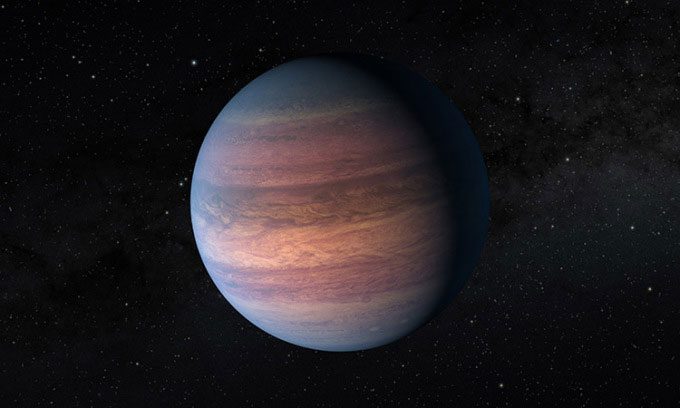Analysis of old image data from the Kepler Space Telescope reveals a giant gas exoplanet very similar to Jupiter.
According to a report published in the Monthly Notices of the Royal Astronomical Society, a research team led by the University of Manchester has named the new object K2-2016-BLG-0005Lb. This is the most distant exoplanet ever discovered by the Kepler Space Telescope, located more than twice as far as the previous record, at a distance of 17,000 light-years from Earth.

Simulation of a Jupiter-like exoplanet. (Image: NASA/JPL-Caltech/R. Hurt)
K2-2016-BLG-0005Lb is likened to a second Jupiter, sharing many similarities with the largest planet in our Solar System. It is also a giant gas planet, weighing 1.1 times that of Jupiter (twice the total mass of all other planets in the Solar System) and orbits its host star at a similar distance.
The research team discovered this distant object while analyzing old image data collected by Kepler from April to July 2016. They utilized a technique known as gravitational microlensing, identifying the exoplanet by tracking its gravitational field’s effect on the brightness of the host star. Specifically, when a planet passes in front of a star, its gravitational force can bend and amplify the light from that star.
Simulation of K2-2016-BLG-0005Lb altering the brightness of its host star. (Video: University of Manchester)
“To observe this effect, there needs to be a perfect alignment between the planet in front and the star behind. The chance of seeing a background star affected in this way is only one in tens of millions or hundreds of millions,” emphasized Dr. Eamonn Kerins from the University of Manchester, the lead author of the study.
Discoveries like K2-2016-BLG-0005Lb could revolutionize scientists’ understanding of exoplanets, as well as the structure of our Solar System. This marks the beginning of efforts to search for new worlds capable of supporting life.
Kepler was launched in 2009 with the primary goal of discovering distant planets the size of Earth, rather than giant gas planets. After 9 years of operation in orbit, NASA’s telescope ran out of fuel and was “retired” on October 30, 2018. To date, Kepler has helped astronomers identify over 2,700 exoplanets beyond our Solar System.





















































